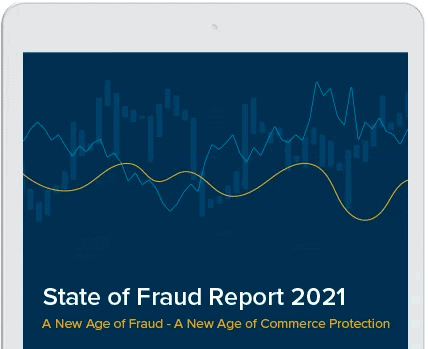Online payments promises to be the next big thing in ecommerce innovation, as industry players seek to differentiate themselves and merchants and consumers demand new and more ways to pay for what they buy.
That consensus ran through the opening keynote of Signifyd’s FLOW Summit 2022, a New York gathering of nearly 300 ecommerce leaders who met to share the current state and future vision of online commerce.

Nicole Jass, FIS
Nicole Jass, of payments leader FIS, Samsung Chief Digital Officer Kal Raman and Signifyd CEO Raj Ramanand took the full conference room through a discussion of the now and near-future of payments. Financing options will explode — pay in 12 months, 24 months, 48 months — and fuel the sales of high-value products. BNPL will continue to grow in popularity, variety and availability. And fraud and risk management will continue its evolution from a focus on avoiding fraudulent orders to a focus on approving as many orders as possible and thereby increasing revenue.
Fraud innovation at the flip of a switch
For instance, Jass noted the FIS launch of Guaranteed Payments by Signifyd, which makes available to FIS customers Signifyd’s commerce protection technology and its financial guarantee against fraud on approved orders with what amounts to a digital flip of a switch.
The excitement and innovation come at a time when industry analysts are focusing on payments as a key point for revenue optimization. Jordan McKee of 451 Research, who also spoke at FLOW, has cited research that shows merchants are missing out on $36 billion in revenue annually due to false declines and because customers are not finding their preferred payment methods on retailers’ sites.
And all of the coming innovation will be driven by more and better use of data.
The reason for payments’ current star turn? The revenue to be made lives in the middle of the shopping journey. Customer acquisition costs are spiraling upwards. Fulfillment costs will continue to rise with consumers demanding faster and more personalized delivery. And so the middle — things like site experience, checkout and payments — are the revenue levers left for merchants to pull. And more importantly, they are the levers that merchants can control.
It was clear from the FLOW discussion that Jass and Raman are already showing the way. (A recording of the full panel discussion is now available.) Raman, who took Samsung’s direct-to-consumer business from the idea stage to a multi-billion dollar business in four years, said he and his team adopted the advice the late Apple co-founder Steve Jobs once gave to graduating Stanford University students.

Kal Raman, Samsung
“We stayed true to one of the statements Steve Jobs made in his commencement speech in 2005 at Stanford,” Raman said. “We stayed hungry and smart.”
Return on shopping cart is the new key metric
Particularly when it came to what happened to orders after a shopper hit the buy button. Raman and his team adopted a metric they called “return on shopping cart.” The idea was to aggressively track what happens to orders that consumers place in their carts. How many convert? What happens to those that don’t? Are there opportunities to save those customers — not just for that one sale, but for a lifetime?
For her part, Jass, FIS senior vice president of growth solutions product. stressed the need for payment providers — processors and others in the field — to distinguish themselves with the value they offer merchants and by extension consumers.
“The biggest thing in payments is that payments is getting commoditized,” Jass said.
“The payments piece is like the utility company. We’re the electricity that you just accept comes to your house.”
But FIS, which includes payments powerhouse Worldpay, is breaking out of that mold. One major initiative, as Jass mentioned, is its launch of Guaranteed Payments.
“It really is the culmination of a partnership with Signifyd,” Jass said. “We talk to customers and the top two pain points are one, higher approval rates. ‘l need higher approval rates.’ And two, ‘I don’t have capital or authorization to build or integrate anything,’” Jass said. “With Guaranteed Payments it will be integrated into our payments stack. We’re literally talking to our customers about turning on higher approvals and guaranteed approvals, which I believe is the first in the industry.”
It is the kind of innovative collaboration that will put an end to payments’ path to commoditization.
Guaranteed Payments powered by Signifyd is a huge game-changer
“I think it’s a huge game-changer,” Jass said.
For one thing, it brings to life the change in posture from fighting fraud as a defensive battle to approving orders as a way to go on offense.
“We’re not selling a fraud solution, in my opinion,” Jass said of Guaranteed Payments. “We’re selling higher approvals and the freedom for those customers to go out in the market and try new things, try new payment plans, without the fear of fraud.”
The product and its guarantee are already showing great promise, Jass said.

“We’ve already been in the market. Our first customer who’s on our platform, as you know, saw a 7% increase in approval rate, which I think turned into $8 million. That’s meaningful. That’s topline. They worked so hard to get that customer into the shopping cart and that was $8 million in good revenue that needed to get through.”
Moreover, Ramanand pointed out that by virtue of sending more good orders through the payment system other players — such as issuers — will authorize more orders as they see they are receiving better quality orders.
The new era of payments is off to a good start. We should all be excited to see what comes next.
Feature photo by Sarah Kinkade
We can help you improve your payments experience









